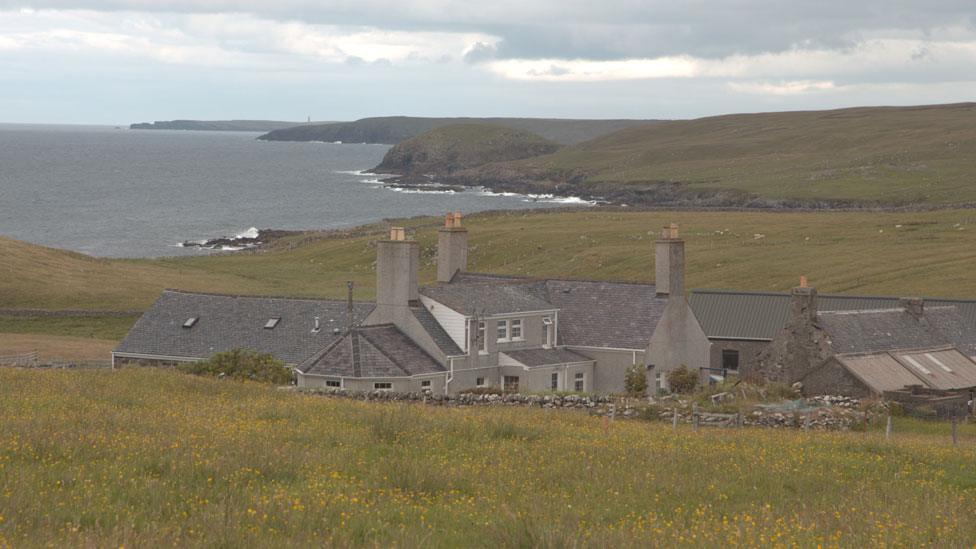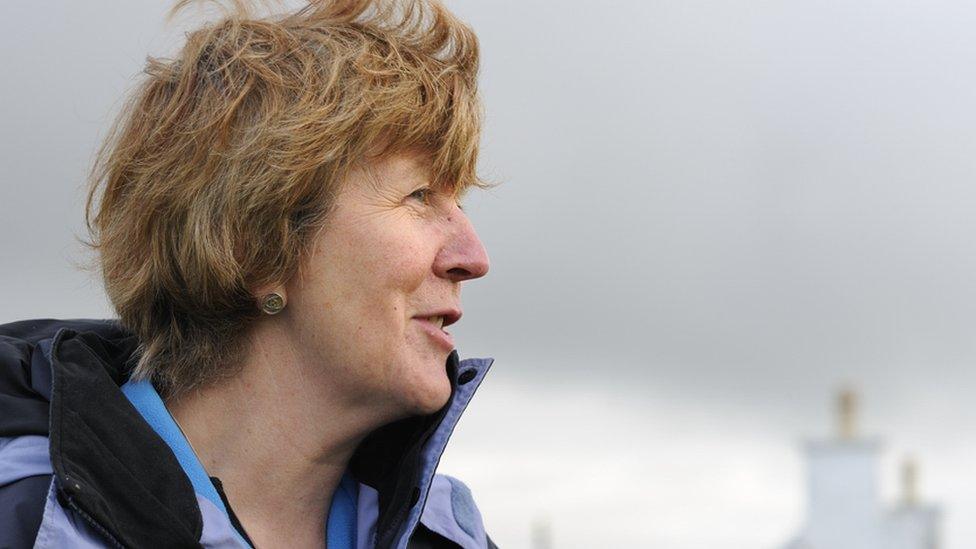How lives were transformed by a post-war land act
- Published

Jessie and Murdo Macdonald set up home on a farm that had been broken up into crofts
Ninety-five years ago the lives of a young family in the Western Isles were transformed by a landmark piece of legislation. A descendant of that family says the impact of the law, the Land Settlement Act, can still be felt today.
December marks the centenary of the Land Settlement Act.
It was introduced by the British government in response to land raids by frustrated and disillusioned soldiers and sailors after World War One.
When the war ended, many soldiers and sailors from the Highlands and Islands returned home believing they had been promised land as a reward for their service on the frontline.
They had expected to use the land to build homes, grow crops and raise livestock to feed their families.
But when they found this was not available to them as promised, they carried out raids to take control of areas of large estates.
The act gave the British government power to buy land and then divide it up into crofts and smallholdings.
The Western Isles was among the places where there was unrest, and raids on the large estates.
In 1924, on the Isle of Lewis, Agnes' maternal grandparents Jessie and Murdo Macdonald benefitted from the terms of the act.
Galson Farm, a large farm in Lewis, had been broken up into crofts.
After raising a loan the Macdonalds were able to secure one of the crofts with a house attached.
Their home at Galson was a bothy formerly used as accommodation for farm labourers.

The Galson Farm complex - the bothy is the slate-roofed building on the right
Agnes says: "They were taking on a stone-built, slate-roofed property and this was immediately a big improvement to what they were used to.
"Like many other families at that time they were sharing a thatch-roofed blackhouse. Along with their two children, they were sharing that home with other members of their family.
"There is no question my grandparents thought themselves very, very lucky.
"Life was hard, and there was much poverty on the islands after the war, but the Land Settlement Act gave families the opportunity to make a living on a croft and raise a family in a community on the island where they were from."
The alternative for many was to leave the Western Isles to find work and a home elsewhere.

Land Settlement Act's legacy

People living in the Western Isles were among those who benefitted from the Land Settlement Act
The story of Jessie and Murdo Macdonald features in a new paper by Highlands historian Prof James Hunter.
Called Re-peopling Empty Places, external, it has been published by the Scottish Land Commission to mark the centenary of the Land Settlement Act.
The commission is a public body set up by the Land Reform (Scotland) Act 2016. Funded by the Scottish government, it looks ways land and building ownership can benefit more people.
The terms of the Land Settlement Act have not been used since the 1950s.
But commission chairman Andrew Thin believes its impact is still relevant as remote communities face new challenges.
"Now, when we are faced with declining populations in some of our most fragile rural communities, we should reflect on the legacy of the 1919 Act and challenge ourselves to find today's equivalent solutions," he said.
"The momentum for change is growing, with a focus on population challenges in the new Planning (Scotland) Act 2019 and a commitment to 'increasing the population of the rural areas of Scotland'."
He added: "Land availability in the right place at the right price, is core to securing long term renewal of remote rural populations, and land ownership is key to making this happen."

Members of the Macdonalds' family continued to live in the bothy until 1969. Agnes, herself lives in Galson, where she is a crofter, a book publisher and a director of the Galson Estate Trust.
The trust manages a 56,000-acre community-owned estate which involves 22 villages and a population of 2,000 people.
Galson Farm forms part of the estate, which passed into community ownership 12 years ago.

Agnes Rennie says her grandparents considered themselves lucky to secure a croft in 1924
Agnes says the original farm complex has grown into a larger community since the time her grandparents moved there.
But she says: "In a physical way you can still see the drystone dykes of the farm, and a large field where, as a result of the Land Settlement Act, three crofts were created.
"And these were considered to be sizeable crofts at the time.
"My grandparents considered themselves hugely well off in terms of the opportunity they were given to make a life for themselves on their own island."
- Published21 September 2019

- Published28 August 2019
